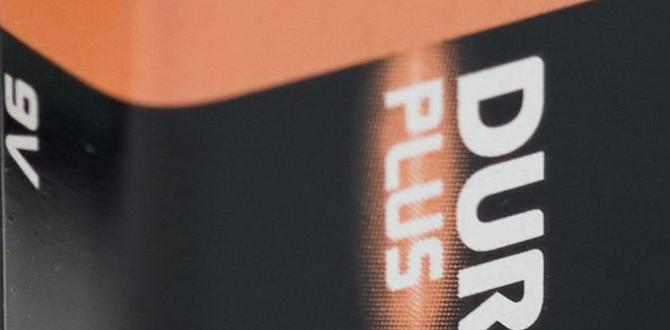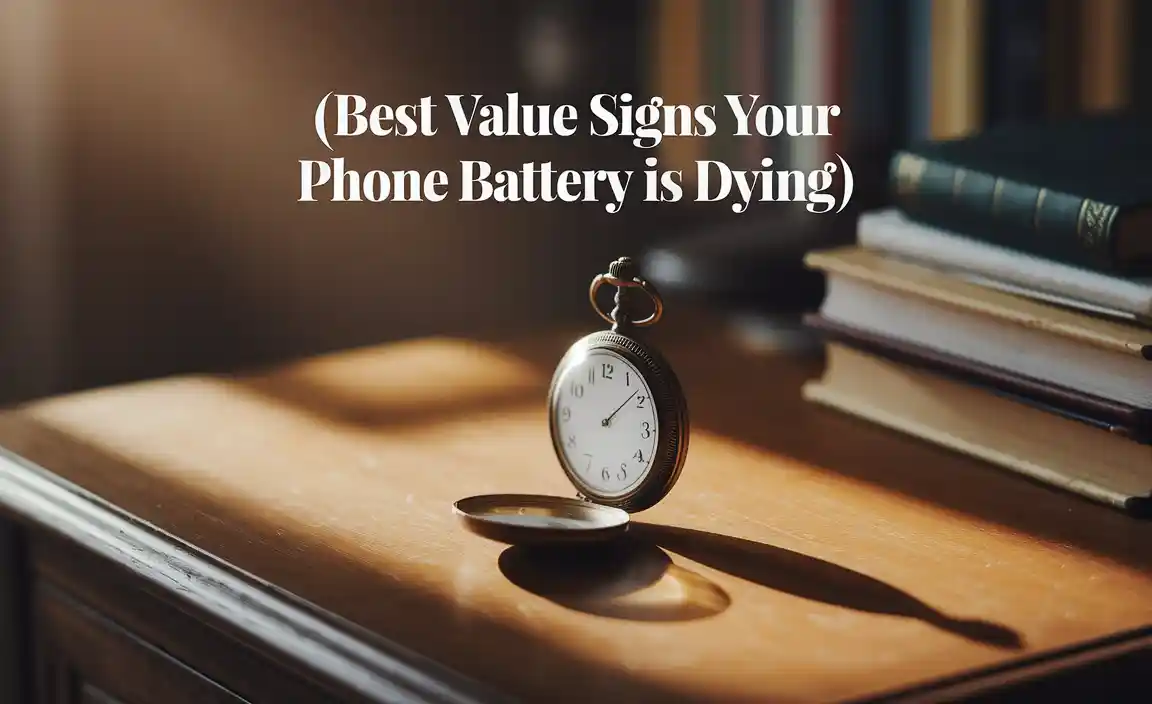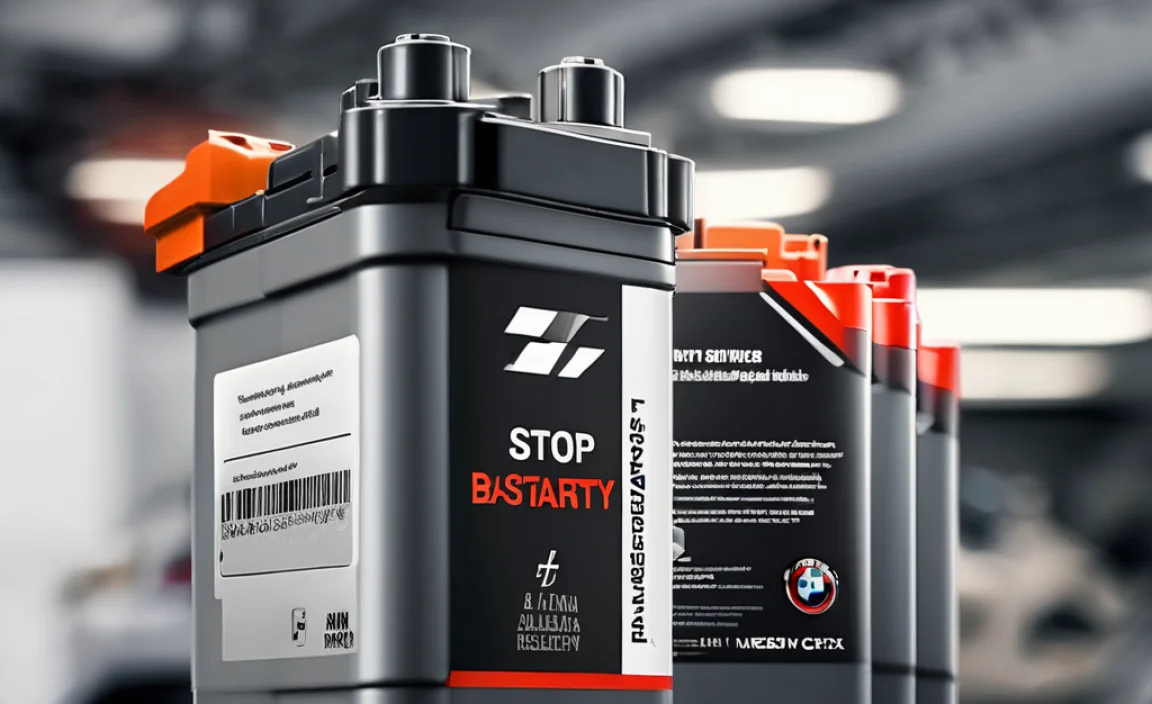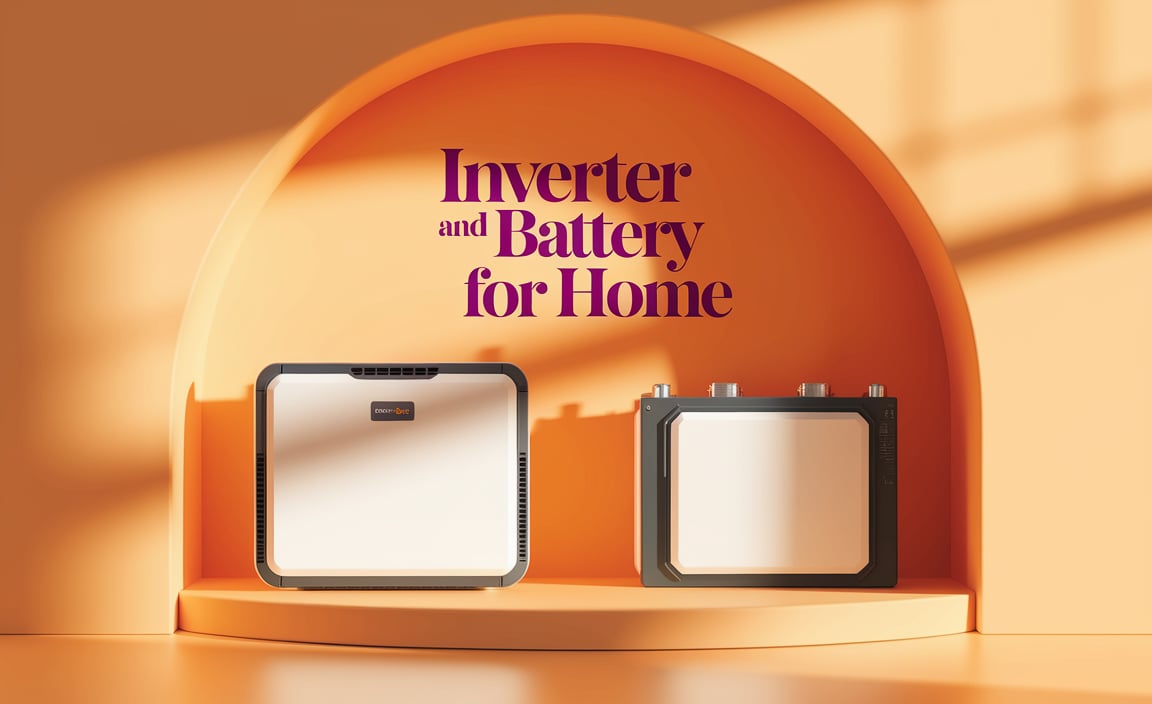Quick Summary
A 12-volt solar charger kit can reliably power and maintain your 12-volt battery, perfect for RVs, boats, and off-grid power. This guide breaks down how to choose, set up, and safely use these systems for essential, eco-friendly power.
12 Volt Solar Charger Battery Systems: Your Guide to Essential, Eco-Friendly Power
Ever found yourself with a dead battery at the worst possible moment? Whether it’s your car, boat, or RV, a reliable power source is crucial. For many of us, that means a 12-volt battery. But what if you could harness the sun’s energy to keep that battery topped up and ready to go? That’s where a 12-volt solar charger comes in. These systems are simpler than you might think and offer a fantastic way to ensure you always have power, all while going green. You don’t need to be a whiz with electronics to set one up. This guide will walk you through everything you need to know, from understanding the basics to getting your solar charger up and running. Let’s dive into how you can unlock this essential power source!
What is a 12 Volt Solar Charger and Why Do You Need One?
A 12-volt solar charger is a system designed to capture sunlight and convert it into electrical energy to charge a 12-volt battery. Think of it as a portable, renewable power station for your battery. These systems are incredibly versatile and have become a popular choice for:
- Keeping RV and Camper Batteries Charged: Imagine being off the grid, enjoying nature, without worrying about your lights, fridge, or entertainment system draining your battery. A solar charger makes this possible.
- Maintaining Boat Batteries: Boat batteries can struggle with parasitic draws (small amounts of power used even when the engine is off) or simply not getting enough use. Solar power keeps them healthy between outings.
- Powering Remote Locations: For sheds, cabins, or even outdoor lighting where mains power isn’t available, a solar charger for a 12-volt battery offers an independent power solution.
- Car Battery Maintenance: If your car sits for long periods, its battery can lose charge. A small solar panel can trickle charge it, preventing the frustration of a dead car battery.
- Supplementing Power Needs: It’s a great way to reduce reliance on grid power for certain applications, saving money and helping the environment.
The “12-volt” refers to the nominal voltage of the battery the system is designed to charge. Most cars, motorcycles, RVs, and small boats use 12-volt battery systems. Having a solar charger means you can keep these batteries topped up without needing to connect to a wall outlet or run an engine. It’s a reliable, eco-friendly way to ensure your power is always there when you need it.
Understanding the Components of a 12 Volt Solar Charging System
Setting up a solar charging system might sound complicated, but it’s really just a few key parts working together. Knowing what each piece does will help you choose the right components and understand how it all functions.
1. The Solar Panel(s)
This is the heart of your solar system. Solar panels are made up of photovoltaic (PV) cells that capture sunlight and convert it directly into electricity. For 12-volt systems, you’ll often see panels rated in watts. The wattage tells you how much power the panel can produce under ideal sunlight conditions. More watts mean faster charging.
- Types: You’ll commonly find monocrystalline and polycrystalline panels. Monocrystalline panels are generally a bit more efficient and costly, while polycrystalline are more affordable. For most 12-volt battery charging applications, either will work well.
- Size and Output: Panels come in various sizes, from small portable ones to larger ones designed for permanent installation. The size of the panel (and its wattage) you need depends on how much power you need to generate and the amount of sunlight you typically get.
2. The Charge Controller
This is arguably the most important component for protecting your battery. A charge controller sits between the solar panel and the battery. Its main job is to regulate the voltage and current coming from the solar panel to prevent overcharging the battery. Overcharging can damage your battery, reduce its lifespan, and even be a safety hazard.
- PWM (Pulse Width Modulation): These are simpler, more affordable controllers. They’re good for smaller systems where exact battery voltage isn’t critical.
- MPPT (Maximum Power Point Tracking): These are more advanced and efficient. They can optimize the power output from your solar panel, especially in varying light conditions, making them great for larger systems or when you want to maximize every bit of sun.
Safety Tip: Always use a charge controller with your solar panel and 12-volt battery. Skipping this step can lead to battery damage and potential hazards.
3. The 12 Volt Battery
This is the component that stores the electricity generated by the solar panel. For solar charging systems, deep-cycle batteries are usually recommended. Unlike car batteries (which are designed for short bursts of high power to start an engine), deep-cycle batteries are built to provide a steady amount of power over a longer period and can be discharged more deeply without damage.
- Types: Common types include flooded lead-acid, sealed lead-acid (AGM – Absorbed Glass Mat, and Gel), and lithium-ion. Each has its pros and cons regarding cost, maintenance, lifespan, and performance.
4. Wiring and Connectors
You’ll need appropriate gauge wiring to connect your solar panel to the charge controller and the charge controller to the battery. The gauge (thickness) of the wire is important – too thin a wire can overheat and lose power. Connectors, like MC4 connectors (common for solar panels) and battery terminals, ensure secure and safe connections.
Optional Components:
- Inverter: If you need to power devices that run on standard household AC power (like laptops or small appliances), you’ll need an inverter to convert the 12-volt DC power from your battery into 120-volt AC power.
- Mounting Hardware: For fixed installations, you’ll need brackets or mounts to position your solar panel correctly for optimal sun exposure.
Choosing the Right 12 Volt Solar Charger System for Your Needs
The “best” solar charger system isn’t one-size-fits-all. It depends entirely on what you want to power and where you’ll be using it. Let’s break down how to figure out what you need.
Step 1: Assess Your Power Needs
This is the most critical step. What devices do you want to power, and for how long? This will help you determine:
- Battery Size (Amp-Hours): How much storage capacity does your battery need? You can calculate this by adding up the power draw (in amps) of your devices multiplied by how many hours you’ll use them per day. For example, a 10-watt light used for 4 hours on a 12-volt system is roughly 3.3 amp-hours (10W / 12V * 4h).
- Solar Panel Wattage: How much power do you need to generate daily to recharge your usage and account for inefficiencies and cloudy days?
A good rule of thumb for off-grid systems is to aim for a solar array that can produce about 1.5 to 2 times your daily energy consumption to ensure you can recharge even on less sunny days.
Step 2: Panel Size vs. Sun Exposure
The amount of sunshine you get in your location is crucial. The U.S. Department of Energy provides solar irradiation data that can help you estimate the average peak sun hours per day for your area throughout the year. Solar panels are rated for their output under “Standard Test Conditions (STC),” which is maximal sunlight. In reality, you’ll rarely get that full output.
You can find great resources for solar irradiation data from government agencies. For example, the National Renewable Energy Laboratory (NREL) offers tools and data that can help estimate solar potential.
Step 3: Select Your Charge Controller
As mentioned, you’ll need a charge controller. For smaller, simple systems charging a single battery, a PWM controller might suffice. For larger systems, or if you want to maximize efficiency, an MPPT controller is a better investment. Ensure the controller’s amperage rating is sufficient for your solar panel’s output and your battery voltage.
Step 4: Battery Type Consideration
- Flooded Lead-Acid: Most affordable, require regular maintenance (checking water levels).
- AGM/Gel: Sealed, maintenance-free, more vibration resistant, but can be more expensive and sensitive to overcharging.
- Lithium-ion (LiFePO4): Lightweight, much longer lifespan, higher efficiency, deeper discharge capability, but significantly more expensive upfront. Often include built-in Battery Management Systems (BMS).
If you’re powering an RV or boat, consider a battery designed for deep-cycle use. For car battery maintenance, a small, low-wattage panel with a basic charge controller is usually enough to keep a standard car battery topped up.
Step 5: Pre-Made Kits vs. Building Your Own
Many manufacturers offer complete 12-volt solar charger kits. These are an excellent option for beginners as they include a matched solar panel, charge controller, and sometimes even wiring and mounting hardware. They take the guesswork out of component compatibility.
If you’re comfortable with wiring or have specific needs, you can also buy components separately. This allows for more customization but requires a bit more knowledge.
Table: Comparing Solar Charger System Component Types
| Component | Key Features | Considerations |
|---|---|---|
| Solar Panel | Monocrystalline, Polycrystalline | Wattage determines output. Size affects portability/installation. Efficiency varies. |
| Charge Controller | PWM (simpler, cheaper), MPPT (more efficient, expensive) | Amperage rating is crucial. Must match battery voltage (12V). |
| Battery | Deep-cycle Lead-Acid, AGM, Gel, Lithium-ion (LiFePO4) | Capacity (Ah) for storage. Lifespan, cost, maintenance, and weight vary greatly. |
| Wiring/Connectors | Appropriate gauge cable, MC4 connectors, battery terminals | Wire gauge is vital to prevent loss and overheating. |
Installing Your 12 Volt Solar Charger: A Step-by-Step Guide
Let’s get this system set up! These steps are for a basic setup. Always refer to your specific component manuals for detailed instructions.
Safety First!
Working with batteries and electricity requires caution. Always wear safety glasses. Never short-circuit battery terminals (connecting positive and negative directly). Disconnect power sources when making connections.
Step 1: Mount Your Solar Panel
Find a location for your solar panel that gets maximum direct sunlight for the longest part of the day. This usually means south-facing in the Northern Hemisphere. Ensure it’s securely mounted and won’t be damaged by wind or weather. If using a portable panel, just place it where it can get sun.
Step 2: Connect the Panel to the Charge Controller
Most solar panels have output wires. Connect these wires to the “Solar Input” or “PV” terminals on your charge controller. Pay close attention to polarity: positive (+) from the panel goes to the positive terminal on the controller, and negative (-) goes to negative.
If your panel has MC4 connectors, you might need adapter cables to connect to your charge controller’s screw terminals.
Step 3: Connect the Charge Controller to the Battery
This is a crucial step for correct operation. The charge controller needs to sense the battery’s voltage to manage charging properly. The order of connection matters here.
- First, connect the charge controller’s “Battery” terminals to your 12-volt battery. Again, ensure correct polarity: positive to positive, negative to negative.
- Use an appropriate gauge wire for the distance between the controller and the battery. Keep this wire run as short as possible.
Why this order? Connecting the battery first allows the charge controller to correctly identify the battery voltage and configure itself. Then, connecting the solar panel provides the power source.
Step 4: Connect Solar Panel Power
Once the charge controller is connected to the battery, you can then connect the solar panel wires to the charge controller’s “Solar Input” terminals (if you haven’t already). Your charge controller should now indicate that it’s receiving power from the sun and charging the battery.
Step 5: Connect Your Load (Optional)
Many charge controllers have a “Load” terminal. You can connect 12-volt devices (like small lights or fans) directly to these terminals. This often allows the charge controller to manage the load, disconnecting it if the battery gets too low to prevent deep discharge.
If you plan to use AC devices, you would connect an inverter to the battery terminals (not the load terminals, usually) and then plug your AC devices into the inverter.
Step 6: Test and Monitor
Check the indicators on your charge controller. Most have LEDs or a small screen that shows charging status, battery voltage, and power output. Ensure everything looks normal. If you notice error codes, consult your charge controller’s manual.
Essential Tools You Might Need:
- Wire strippers/crimpers
- Screwdrivers (Phillips and flathead)
- Adjustable wrench or socket set (for battery terminals)
- Multimeter (for testing voltage and continuity – highly recommended!)
- Safety glasses
- Gloves
Maintaining Your Solar Charging System and 12 Volt Battery
A well-maintained system will last longer and perform better. Here are some tips:
Solar Panel Maintenance:
- Cleaning: Keep the surface of your solar panels clean. Dust, dirt, bird droppings, and pollen can significantly reduce their efficiency. Wipe them down periodically with a soft cloth, water, and mild soap if necessary. Avoid abrasive cleaners.
- Physical Inspection: Check for any cracks, damage, or loose connections.
Charge Controller Checks:
- Connections: Periodically ensure all wires are tightly connected to the controller terminals. Vibrations can loosen them over time.
- Indicator Lights: Understand what the indicator lights mean on your controller. They provide vital information about the system’s status.
Battery Care:
- Terminal Cleaning: Battery terminals can corrode over time. Clean them with a wire brush and a mixture of baking soda and water. Ensure connections are tight once cleaned.
- Water Levels (for flooded batteries): If you have flooded lead-acid batteries, check the electrolyte levels regularly and top them up with distilled water only, as needed. Never overfill.
- Avoid Deep Discharge: While deep-cycle batteries handle this better than car batteries, constantly draining them to very low levels will shorten their lifespan. Aim to keep them above 20-30% charge if possible.
- Temperature: Extreme heat or cold can affect battery performance and lifespan. Try to keep batteries in a temperature-stable environment if possible.
Wiring and Connections:
Inspect all wiring for signs of wear, fraying, or damage. Ensure all connections are secure. Loose connections are a common cause of system failure or reduced performance.
Troubleshooting Common Issues
Even with the best setup, you might run into a hiccup. Here are a few common problems and solutions:
Issue: Battery not charging, or charging very slowly.
- Check connections: Are all wires securely connected between the panel, charge controller, and battery?
- Panel obstruction: Is the solar panel shaded by trees, buildings, or excessive dirt?
- Controller status: What indicators are on the charge controller? Does it show sunlight input? Does it show charging?
- Battery health: Is the battery old and nearing the end of its life? A bad battery can prevent charging.
- Fuse check: Is there an inline fuse between the controller and battery, or controller and panel, that might have blown?
Issue: Charge controller showing an error code.
Consult your charge controller’s manual. Error codes are specific to the manufacturer and model and will tell you exactly what the problem is (e.g., over-voltage, under-voltage, temperature fault, reverse polarity).





